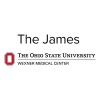
Lenalidomide, Ixazomib, and Rituximab as Front-Line Therapy for High Risk Indolent B-Cell Lymphoma...
B Cell LymphomaLymphomaA Phase IB/II Trial of Lenalidomide (Revlimid®), Ixazomib and Rituximab (RIXAR) as Front-line Therapy for High Risk Indolent B cell Lymphoma

Irradiated Donor Cells Following Stem Cell Transplant in Controlling Cancer in Patients With Hematologic...
Acute Lymphoblastic LeukemiaAcute Myeloid Leukemia in Remission17 moreThis pilot clinical trial studies the side effects of irradiated donor cells following stem cell transplant in controlling cancer in patients with hematologic malignancies. Transfusion of irradiated donor cells (immune cells) from relatives may cause the patient's cancer to decrease in size and may help control cancer in patients receiving a stem cell transplant.

A Study of DPX-Survivac Vaccine Therapy in Patients With Recurrent Survivin-expressing DLBCL
Diffuse Large B-Cell LymphomaThis phase 2 study was designed to assess the efficacy and safety of DPX-Survivac plus low dose cyclophosphamide in up to 24 subjects with recurrent diffuse large B-cell lymphoma (DLBCL) who are not eligible for transplant. However, with the evolving field of immunotherapy Immunovaccine has begun to focus on combination therapies, combining DPX-Survivac treatment with checkpoint inhibitors and other immune modulators. This phase 2 study was therefore terminated with fewer subjects than planned to allow the progress of other studies, such as NCT03349450.

A Study of Obinutuzumab in Combination With CHOP Chemotherapy Versus Rituximab With CHOP in Participants...
Diffuse Large B-Cell LymphomaThis open-label, randomized, parallel group study will evaluate the efficacy and safety of obinutuzumab in combination with cyclophosphamide, doxorubicin, vincristine, and prednisolone or prednisone (CHOP) chemotherapy versus rituximab (MabThera/Rituxan) with CHOP in previously untreated participants with cluster of differentiation 20 (CD20)-positive diffuse large B-cell lymphoma (DLBCL). Participants will be randomized to receive either obinutuzumab 1000 milligrams (mg) intravenously (IV) every 21 days or rituximab 375 milligrams per square meter (mg/m^2) IV every 21 days for 8 cycles, in addition to 6-8 cycles of CHOP chemotherapy IV every 21 days. Participants randomized to the obinutuzumab arm will receive an additional two doses on Days 8 and 15 of Cycle 1. Anticipated time on study treatment is 24 weeks.

VTX-2337 in Combination With Radiotherapy in Patients Low-Grade B-cell Lymphomas
Low Grade B Cell LymphomaThis study is to determine the safety and effectiveness of VTX-2337 (an investigational drug that stimulates the immune system) in combination with radiation therapy in treating patients with low-grade B-cell lymphoma. Patients will receive 2 low doses of radiotherapy, and 9 intratumoral injections of VTX-2337 over the course of 3 months.

Phase 2 Study of Zevalin Versus Zevalin and Motexafin Gadolinium in Patients With Rituximab-Refractory...
Non-Hodgkin's LymphomaThe objectives of this study are to evaluate the efficacy and safety of the Zevalin regimen compared to Zevalin and motexafin gadolinium in patients with rituximab-refractory, low-grade or follicular Non-Hodgkin's Lymphoma (NHL). Effectiveness of the experimental regimen assessed by complete response rate within 6 months of study entry (primary endpoint), complete response rate within 3 months of study entry, and overall response rate within 6 month of study entry.

Single Agent Ofatumumab Vs. Single Agent Rituximab in Indolent B-Cell Non Hodgkin Lymphoma Relapsed...
Non-Hodgkin's LymphomaThis was a multi-center, parallel, active comparator controlled, open-label, randomized (1:1) phase III study of single agent ofatumumab compared to single agent rituximab in subjects with rituximab-sensitive indolent B-cell non hodgkin lymphoma that has relapsed at least 6 months after completing treatment with single agent rituximab or a rituximab-containing regimen. Subjects must have attained a Complete Response or Partial Response to their last prior rituximab containing therapy lasting at least six months beyond the end of rituximab therapy. Subjects were to receive four weekly doses of single agent ofatumumab (1000 mg) or rituximab (375 mg/m2), followed by ofatumumab (1000 mg) or rituximab (375 mg/m2) every 2 months for four additional doses. Therefore, subjects were to receive a total of eight doses of anti-CD20 antibody over 9 months. Subjects were evaluated for response after completion of the first four doses of therapy, after six doses of therapy, and after completion of study therapy. Subjects were to be followed until the end of the designated follow-up period (total study duration of 200 weeks) or until they meet the withdrawal criteria. The primary objective of the study OMB157D 2303 was to demonstrate the efficacy of Arzerra based on the primary endpoint (Progression-free survival (PFS) as assessed by the IRC) in patients with Indolent B-cell Non-Hodgkin's Lymphoma Relapsed After Rituximab-Containing Regimen. The Independent Data Monitoring Committee (IDMC) met on November 22, 2015 and recommended the termination of the study due to futility (cut-off date = 12Jun2015). The IDMC reviewed analyses results for progression free survival (PFS), overall response rate (ORR), and overall survival (OS). Novartis accepted this recommendation and the study was closed. Final analysis was performed (cut-off date =19 Dec 2016). As the study was stopped for futility, the primary objective was not met and some secondary endpoints, supportive of primary objective (Duration of Response (DOR), time to next therapy, and pharmacokinetics) were removed as secondary end points.

Alisertib With and Without Rituximab in Treating Patients With Relapsed or Refractory B-Cell Non-Hodgkin...
Extranodal Marginal Zone B-cell Lymphoma of Mucosa-associated Lymphoid TissueNodal Marginal Zone B-cell Lymphoma9 moreThis phase II trial studies how well alisertib with and without rituximab works in treating patients with relapsed or refractory B-cell non-Hodgkin lymphoma. Alisertib may stop the growth of cancer cells by blocking some of the enzymes needed for cell growth. Monoclonal antibodies, such as rituximab, can block cancer growth in different ways. Some block the ability of cancer cells to grow and spread. Others find cancer cells and help kill them or carry cancer-killing substances to them. Giving alisertib with and without rituximab may be an effective treatment for B-cell non-Hodgkin lymphoma

Ipilimumab and Local Radiation Therapy in Treating Patients With Recurrent Melanoma, Non-Hodgkin...
Adult Nasal Type Extranodal NK/T-cell LymphomaAnaplastic Large Cell Lymphoma32 moreThis pilot phase I/II trial studies the side effects and best of dose ipilimumab when given together with local radiation therapy and to see how well it works in treating patients with recurrent melanoma, non-Hodgkin lymphoma, colon, or rectal cancer. Monoclonal antibodies, such as ipilimumab, can block cancer growth in different ways. Some block the ability of cancer cells to grow and spread. Others find cancer cells and help kill them or carry cancer-killing substances to them. Radiation therapy uses high energy x rays to kill cancer cells. Giving monoclonal antibody therapy together with radiation therapy may be an effective treatment for melanoma, non-Hodgkin lymphoma, colon, or rectal cancer

Iodine I 131 Monoclonal Antibody BC8 Before Autologous Stem Cell Transplant in Treating Patients...
Recurrent B-Cell Non-Hodgkin LymphomaRecurrent Hodgkin Lymphoma4 moreThis phase I trial studies the side effects and best dose of iodine I 131 monoclonal antibody BC8 when given before autologous stem cell transplant in treating patients with Hodgkin lymphoma or non-Hodgkin lymphoma that has returned after a period of improvement or does not respond to treatment. Radiolabeled monoclonal antibodies, such as iodine I 131 monoclonal antibody BC8, can find cancer cells and carry cancer-killing substances to them without harming normal cells. Giving iodine I 131 monoclonal antibody BC8 before an autologous stem cell transplant may kill more cancer cells.
